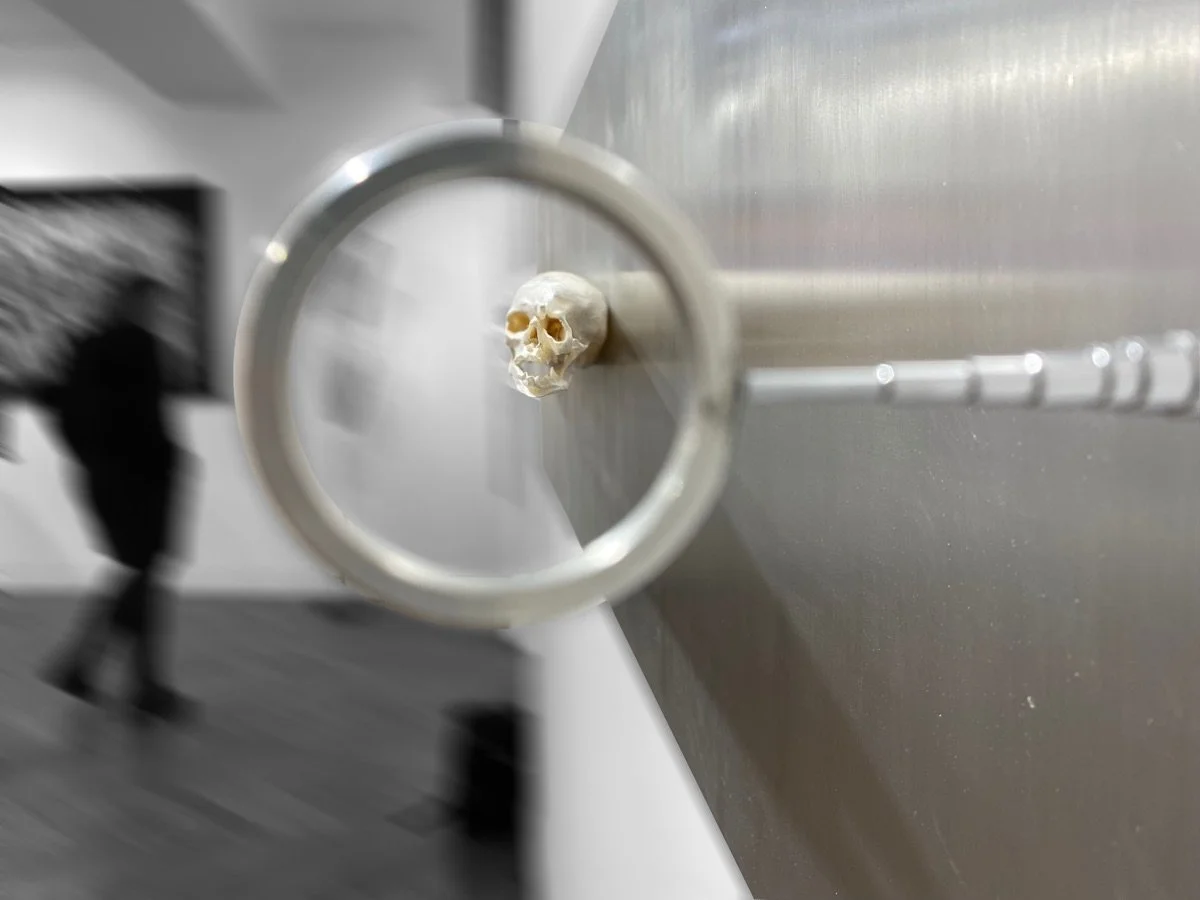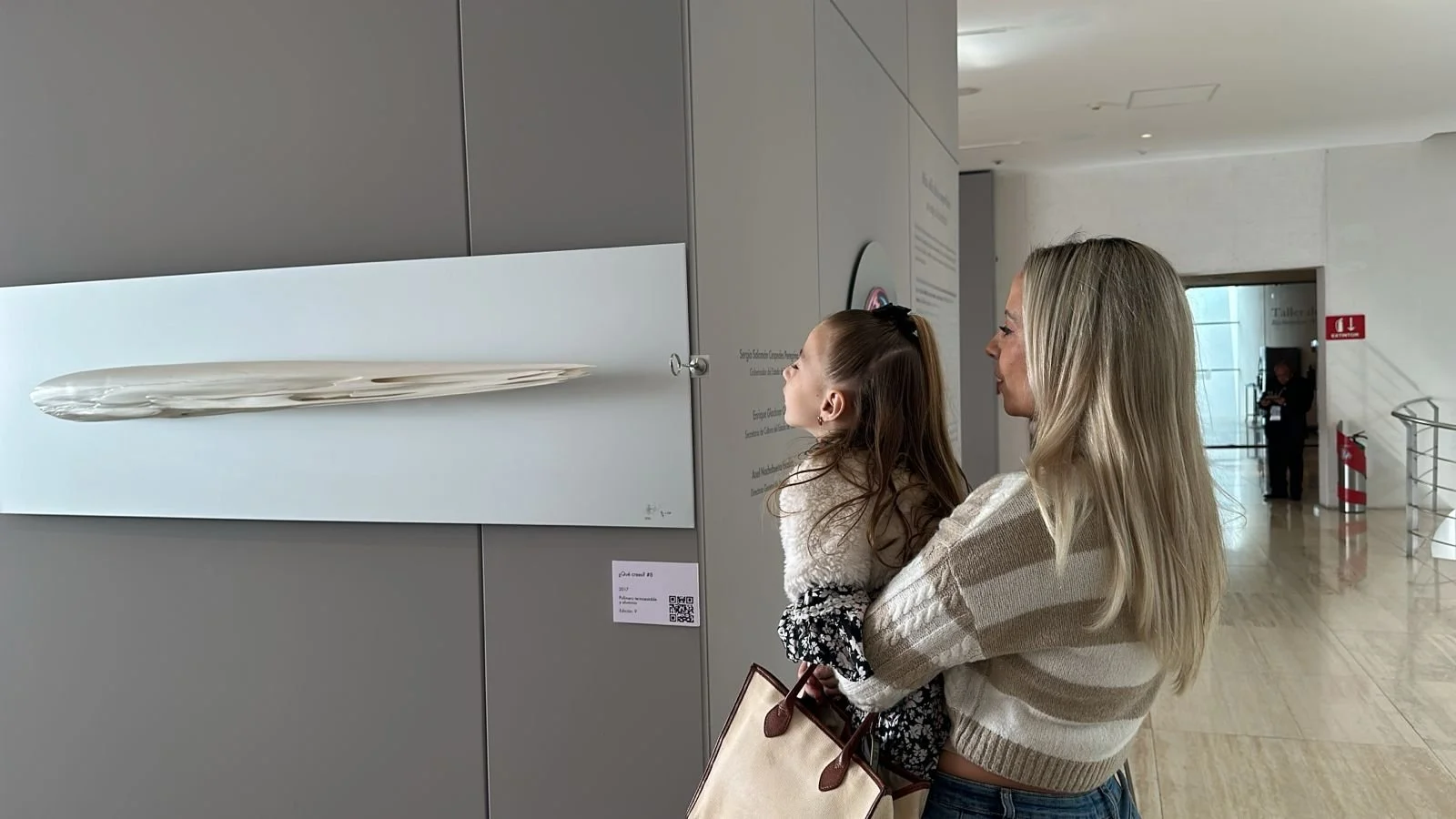What do you believe?
2016 | Aluminium and Nylon | 1500 x 450 x 30 cm
"At the heart of my work, this sculpture transcends its physical form to become a profound exploration of life, death, and the possibilities that may lie beyond. I drew inspiration from the hauntingly enigmatic anamorphic skull in Hans Holbein the Younger’s 16th-century masterpiece, 'The Ambassadors.' My aim was to delve deep into our complex relationship with mortality, much like Holbein did.
In 'The Ambassadors', Holbein's skull, distorted and stretched across the canvas, only transforms into a recognizable shape from a specific viewpoint. In a similar vein, my sculpture invites viewers to perceive death not as a definitive end, but as a concept open to interpretation, varying greatly with one’s perspective.
What I seek to underscore through this sculpture is an enthralling dichotomy: the palpable, tangible representation of death in the skull, juxtaposed against the elusive, profound questions about what follows our earthly existence. I don’t attempt to offer a definitive truth about death or the afterlife. Instead, I urge those who engage with my work to embark on a reflective journey into the depths of their beliefs and fears.
I’ve woven a philosophical thread into the work, suggesting that death might not simply be the binary opposite of life, not just an abrupt halt. If we embrace the idea of an afterlife or a spiritual continuation, death can be seen as a transformative passage. It's not just a leap from being to non-being, but a continuous transition from one state of energy to another, a metamorphosis as enigmatic as an anamorphic skull revealing its true form only from a certain angle.
In creating this sculpture, I've fashioned a space for viewers to ponder the fluid boundary between life and death, the material and the spiritual. It’s a gentle provocation to the observer to consider: If death is not merely an end but a transformation, how does that reshape our understanding of life? What does it mean for the way we live, love, and connect with others?
This philosophical artwork isn't about providing clear-cut answers. Instead, it’s about opening up a space, a moment, where observers can dwell in contemplation, question, and perhaps leave with more queries than they came with. In doing so, it continues the timeless human quest to unravel the elusive mysteries of our existence."
The original 17th century masterpiece by Hans Holbein that inspired this sculpture







